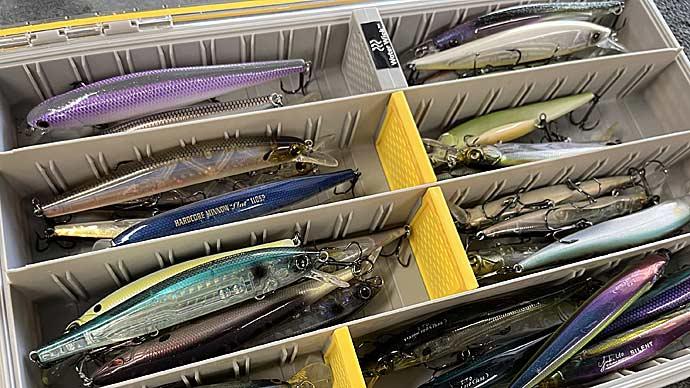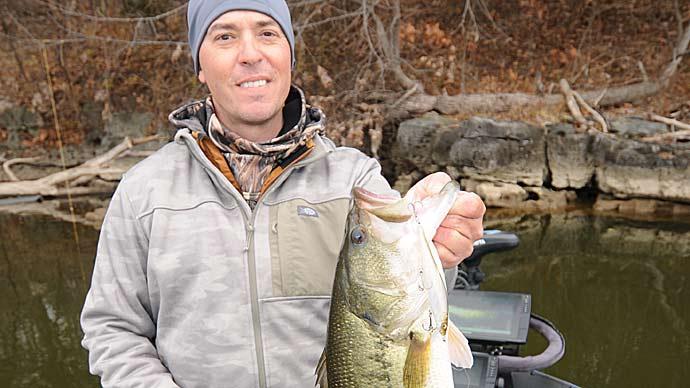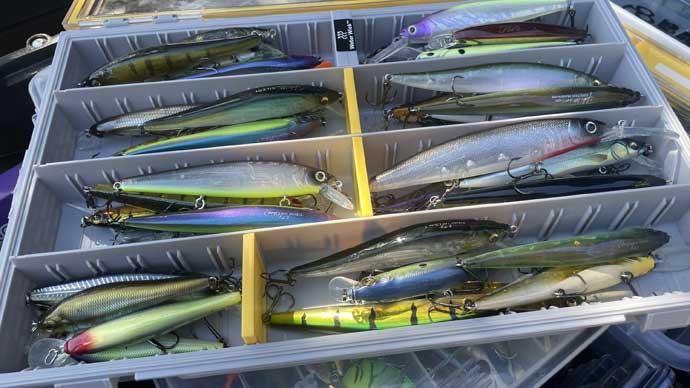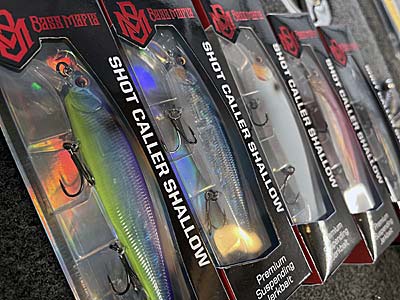
A jerkbait is a lure that has been an effective tool for catching bass for decades and continues to fool bass everywhere to this day. They are great for imitating baitfish and are known for catching bass in all seasons, including the coldest days of the year. Their effectiveness is undeniable, but getting the most out of them requires the right gear, retrieve speed and cadence, and picking the right bait for the job. These easy tips will ensure you can take advantage of one of the most versatile and effective lures on the market.
Narrow Your Colors to Groups
Some high-end jerkbaits have incredibly realistic finishes with natural matte finishes and super translucent color options. There are countless colors, but picking the right one can be simplified by grouping them into three categories. Solid colors like pearl are great in slightly stained water and on dark days, while translucent colors excel in ultra-clear water. Shiny colors with chrome are excellent in bright sunshine and windy days when you need that added attraction to draw fish in.
Keeping your color choices simple by having a few colors that fit into these three categories is enough to cover any situation you see. This may seem obvious, but you do not need every color out there, and something that generally matches the forage fish in your body of water will be enough. Many options match shad, and bass typically do not get a good look at a jerkbait as it slashes and darts in the water, so anything that can pass as a shad will do the job.
Try Different Sizes and Diving Depths
Image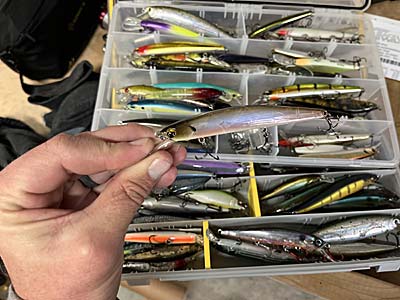
Many popular jerkbaits are approximately 110mm long, but using smaller or even larger ones can sometimes help. Like colors, simplifying your jerkbaits by size can make a difference. The standard size has become around 110mm (4.13 inches) long because of the popularity of the Megabass Vision Oneten. Many jerkbaits are in this range, such as the Ima Flit 120, Berkley Stunna 112, and SPRO McStick 110, which are all also very popular. Using a bait in this general size is standard, but it sometimes pays to go smaller. Baits like the Megabass X-80 Trick Darter and Lucky Craft Pointer 78 are excellent downsized versions that catch fish when the bass do not want a larger offering. Other times, it may pay to go big and use a jumbo-sized bait on lakes where bass eat bigger forage.
Most jerkbaits will dive to approximately 5 or 6 feet deep without any modifications, but there are also much deeper versions. Many popular baits come in a +1 or +2 option, allowing your bait to reach depths of 10 feet or more, which can be very useful when fishing slightly deeper water. Having a few of these in your arsenal will help expand where and when you can catch fish with jerkbaits.
Experiment With Retrieves
One of the most important things to master with a jerkbait is the right action, which comes down to knowing what your bait is doing at all times. A few simple twitches with varying power next to the boat will give you a good idea of how the bait darts and dances with each movement. There are days when more aggressive rod rips are needed to trigger fish; other days, more subtle movements will be what it takes. You can experiment with different retrieves to see what the fish prefer, which can change daily or even by the hour, depending on the conditions.
Experienced jerkbait anglers also mix in sweeps of the rod and quick turns of the handle during the retrieve to change up the cadence of a bait during a retrieve. Sometimes, these irregular changes in action are all needed to get a fish following the bait to commit and strike. As with everything else in bass fishing, it pays to experiment with different retrieves to get fish to bite your lure. There is no one way to fish a jerkbait correctly, so mixing it up will undoubtedly lead to more fish catches.
Pick the Right Rod, Reel, and Line
With jerkbaits, picking the right rod is critical for getting the best action from your bait and for landing fish that are often slashing at a bait and barely getting hooked by a single barb from one of the treble hooks.
Image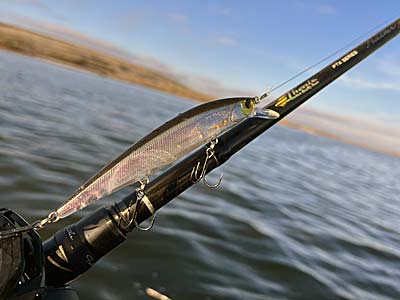
A good jerkbait setup will allow you to effectively work a bait and land more of what you hook. Choosing the right rod comes down to the power and action and not cost. Since most of the work is done with the rod and reel, you do not need a very expensive or sensitive rod to fish a jerkbait. A medium power rod, whether baitcast or spinning, is a good place to start. For action, a moderate fast is usually right where you need it to be, so there is enough tip bend in the rod to get a good action out of your bait and enough bend throughout the rod to be forgiving when fighting fish.
While going with a little less expensive rod is fine, sometimes a better reel is the way to go with jerkbaits. A quality reel will allow you to cast your jerkbait further, which is critical to keep your bait in the strike zone longer. Choosing a good reel with a retrieve speed of around 7.1:1 will allow you to fish a jerkbait effectively.
Image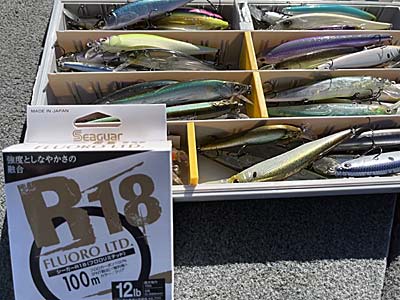
Choosing the right line based on diameter and not just the pound test will ensure you use the correct fishing line. Line is another critical piece that can be overlooked, as line diameter is one of the most essential factors in getting your bait to dive deeper. Many anglers use a line of 10 or 12-pound test for jerkbaits, but line diameter varies greatly from brand to brand. One company's 12-pound test can be thinner than another's 10-test; it's a wide variance, so paying close attention to the actual diameter of the line is what matters. Seaguar, for instance, typically runs much thinner than some brands for the same break strength, and premium fluorocarbon, like their 12-pound R18 Fluoro Limited, is an excellent choice for jerkbait fishing.
Fishing a jerkbait is always a good idea when bass feed on baitfish, and it's no wonder they are such a popular lure. It is easy to get the most out of them: simplify your colors and sizes, grab the right gear, and experiment with retrieves until you start catching fish.


